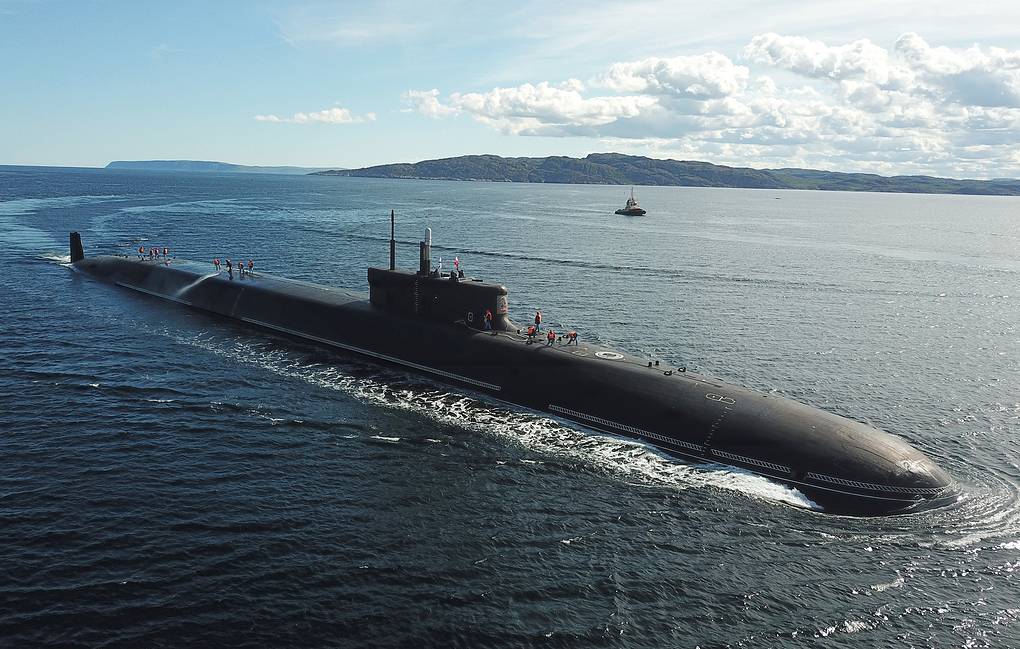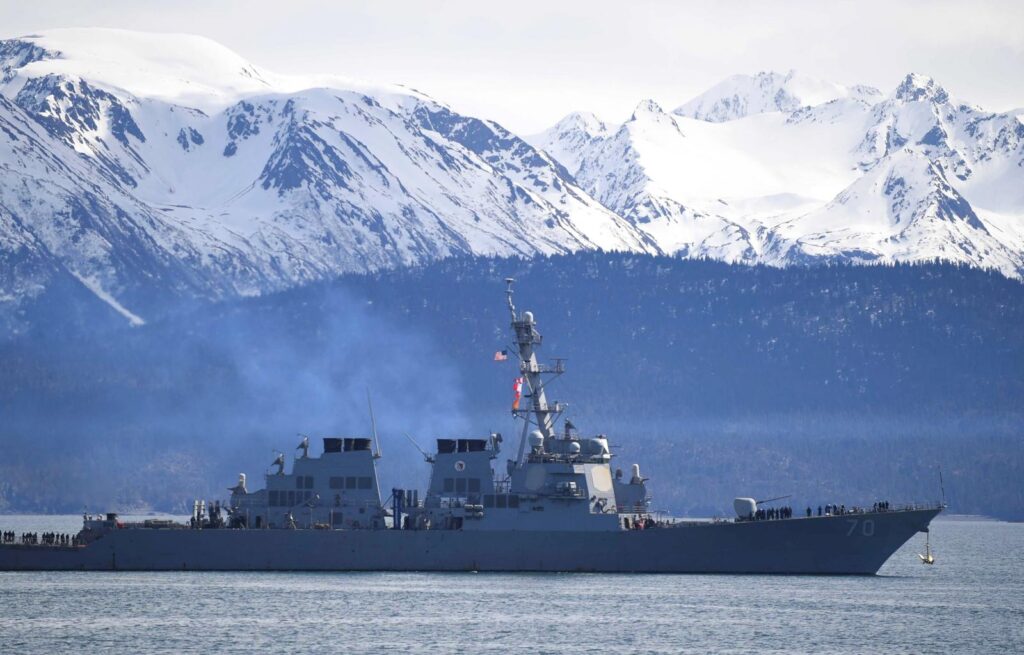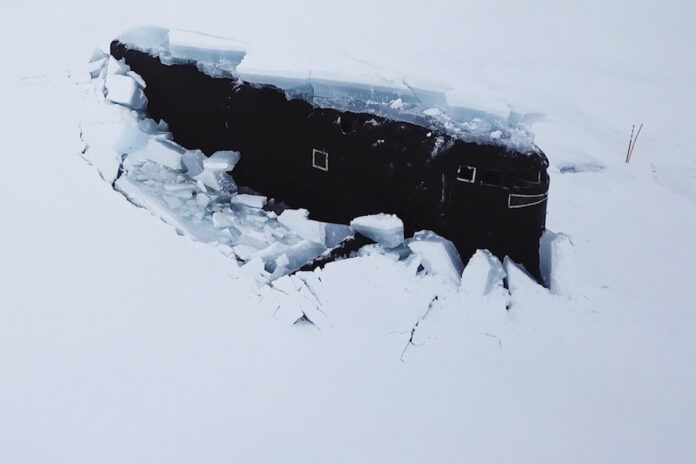The strategic nuclear-powered submarine Knyaz Vladimir “fully justifies its designation and no damage was registered upon its surfacing,”
The strategic missile-carrying submarine Knyaz Vladimir proved its worth in Arctic ice surfacing when three nuclear-powered subs simultaneously broke the 1.5-meter-thick ice, Russian Navy Chief Nikolai Yevmenov reported to Russia’s Defense Minister Sergei Shoigu on Tuesday.
The nuclear-powered submarine Knyaz Vladimir “fully justifies its designation, and no damage was registered upon its surfacing,” the Russian Navy chief said.
The Russian defence minister heard the report by the Navy chief during an inspection of the military and social infrastructure of the nuclear-powered submarines’ base in the Gadzhiyevo garrison in the Murmansk Region, the Russian TASS agency reported.
In the course of an Arctic expedition in March 2021, three Russian nuclear-powered submarines concurrently surfaced in the Alexandra Land Island of the Franz Josef Land archipelago Arctic.
Two submarines were Project 667BDRM (Delfin-class) underwater cruisers, while the third vessel was the improved Project 955A (Borei-A) latest nuclear-powered submarine Knyaz Vladimir. The three subs carried a total of 48 submarine-launched ballistic missiles.
The Knyaz Vladimir is the improved Project 955A strategic missile-carrying underwater cruiser, which represents the fourth generation of nuclear-powered subs built for the Russian Navy. It was laid down at the Sevmash Shipyard on July 30, 2012, and floated out in November 2017.

Compared to the first three Borei-class subs (the Yuri Dolgoruky, the Alexander Nevsky, and the Vladimir Monomakh), the submarine Knyaz Vladimir is quieter. It features improved maneuvering, depth, and armament control systems.
The submarine Knyaz Vladimir entered service with the Russian Navy on June 12, 2020.
Naval Post Comment: The Arctic is increasingly viewed as an arena for geopolitical competition among the United States, Russia, and China. n recent years, Russia has enhanced its military presence and operations in the Arctic, and the United States, Canada, and the Nordic countries have responded with their own increased presence and operations. China’s growing diplomatic, economic, and scientific activities in the Arctic have become a matter of increasing curiosity or concern among the Arctic states and other observers. In the near future, the Arctic Region will become a geostrategic centre of interest with new sea lines of communication that will cut the transportation time between Asia and Europe by half, hydrocarbon deposits, and rare metals.
The US Department of The Navy published a document “A Strategic Blueprint for the Arctic”, which outlines how to use naval power in the Arctic Region. The USA’s ability to maintain its global power depends on maintaining its superiority in the seas and oceans. Therefore, the U.S. must win the great power struggle in the Arctic Region. In the case of China’ achieve its goals, it will weaken US naval power by creating new sea lines communications beyond US control. For sure, Russia will not be happy with these movements.




